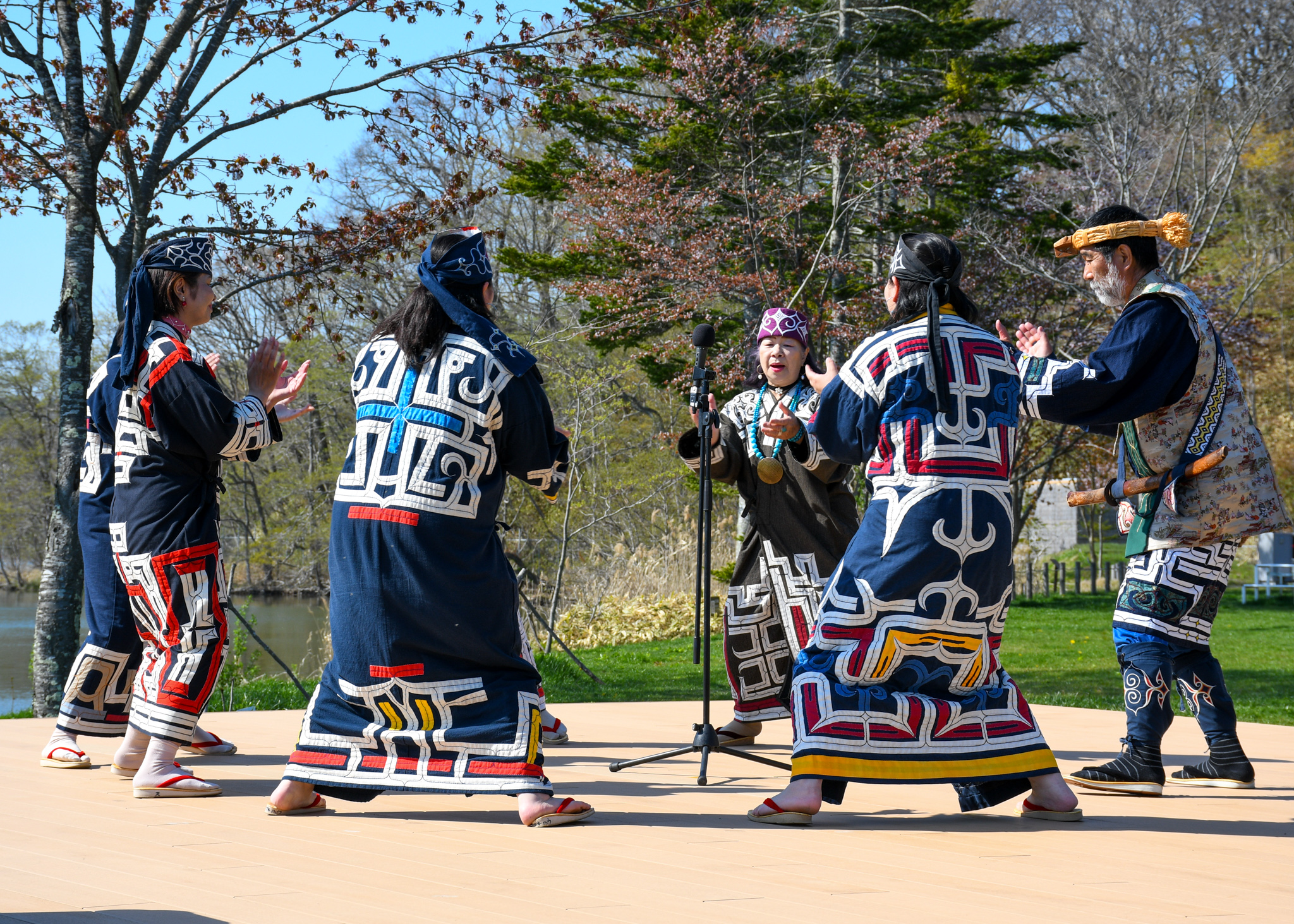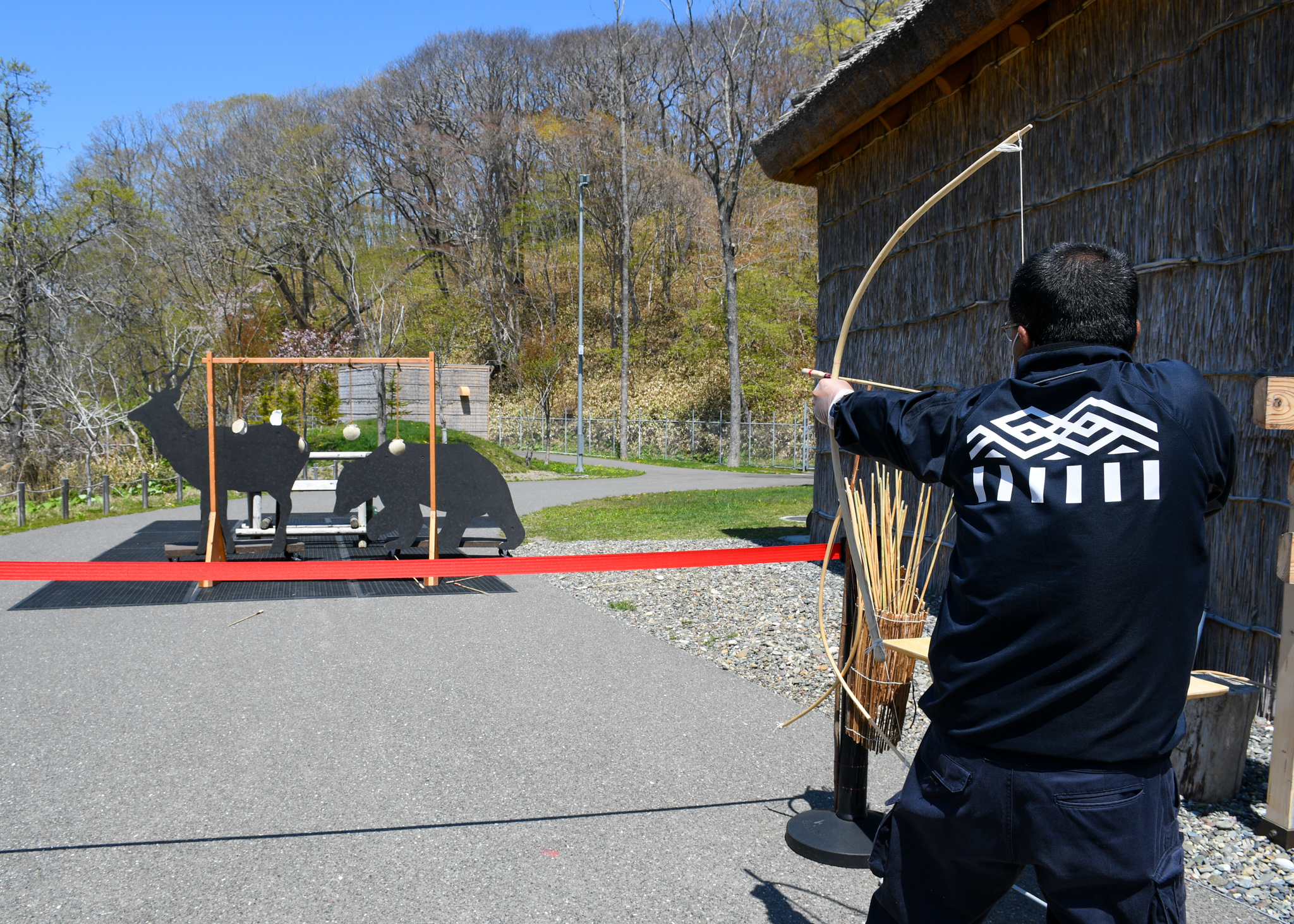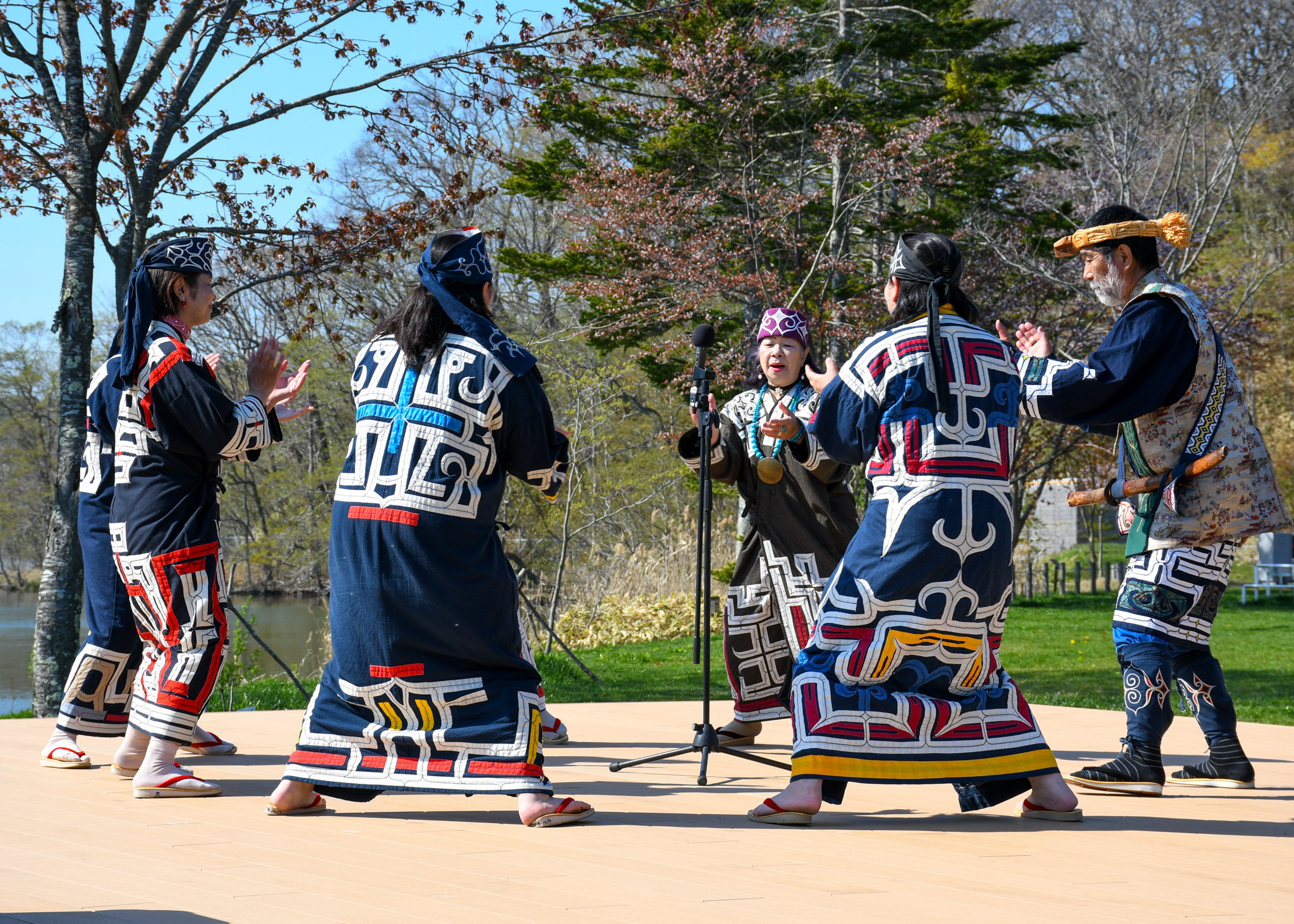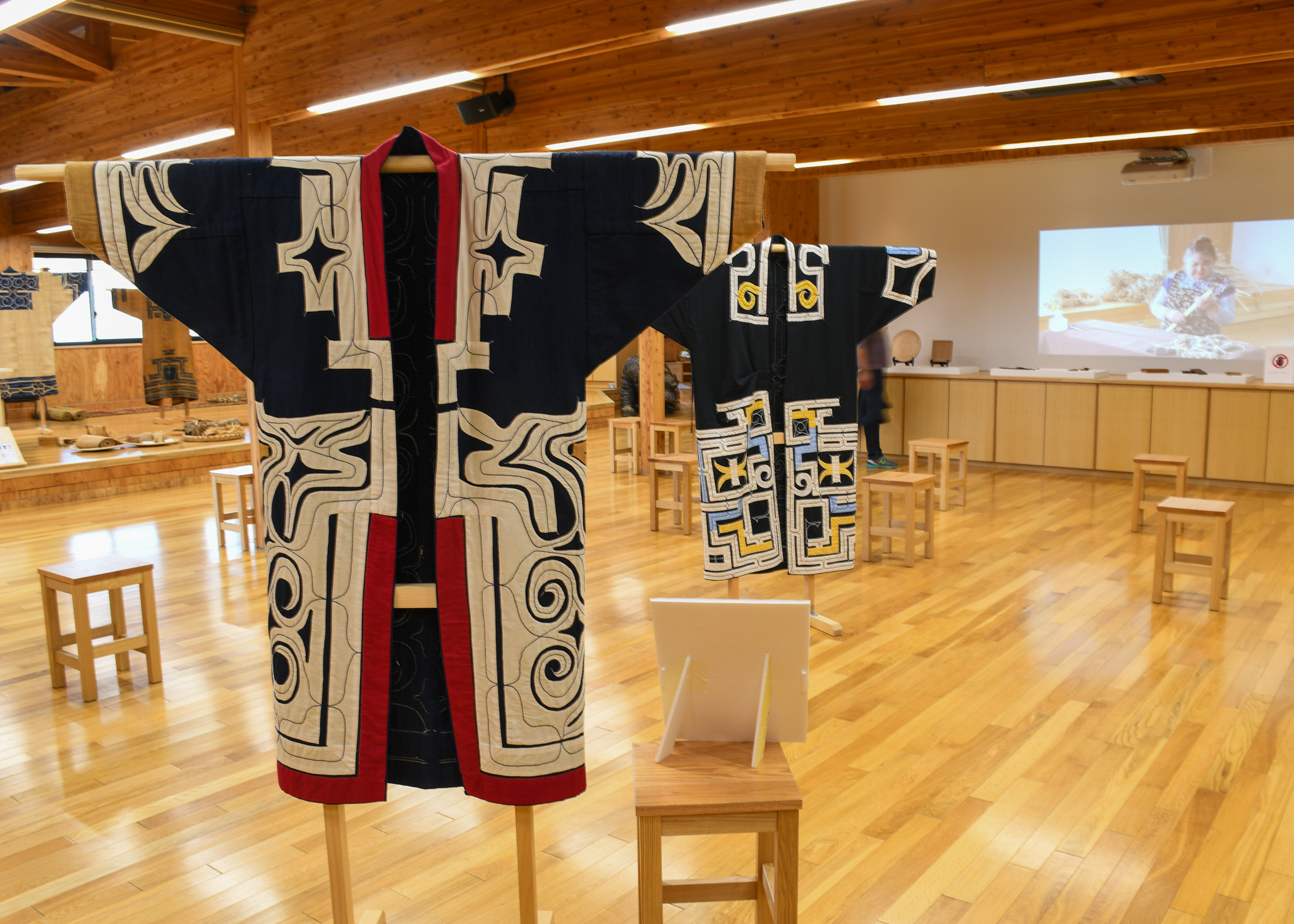
‘Upopoy’ is an Ainu term meaning ‘singing together’, and as such the UPOPOY National Ainu Museum and Park has been conceived as a space where people of all nationalities and ages can come together and develop an understanding of the Ainu’s worldview.
The complex includes an exhibit-based museum space which features a number of hands-on exhibits as well as special exhibitions, as well as a vast outdoors area beside the bank of Lake Poroto. Visitors can gain a first-hand experience of Ainu culture at the on-site facilities such as the Cultural Exchange Hall, Crafts Studio and Workshop, as well as explore a traditional Ainu home called a chise in the Kotan (a traditional village). Here, activities and demonstrations are held throughout the day as part of a diverse activity program which is updated every season.
This article introduces some of the highlights of UPOPOY, and offers some tips on how to plan your day to get the most out of your visit.

Who are the Ainu?
The Ainu have inhabited Hokkaido for many generations, since before Japanese people began to immigrate to the island in the 1800s following the national policy of territorial expansion. Separated by the ocean from the other islands which today make up Japan, the Ainu developed a culture, language, customs and system of beliefs entirely different from that of mainland.
The Ainu ancestors called the world of humans Ainu Mosir, and prayed to the Kami, the gods who are present in all that exists within nature, including man-made items. Ainu communities of the past lived as one with the natural world, making skillful use of their environment to gather resources, never taking more than was necessary.
Today, the descendants of the Ainu live a diverse range of lifestyles, take pride in their Ainu heritage, and choose to engage in activities to promote Ainu culture and encourage its continued growth and development throughout the generations.

Getting There
Shiraoi is easily accessible by train from Sapporo, and travelling by express train reduces the journey time to just 1 hour, making it an easy day trip from the city. Alternatively, you may choose to spend the night at the nearby onsen town of Noboribetsu.
Disembark at JR Shiraoi Station, which is located only a 10-minute walk (or a short taxi ride) away from UPOPOY.
Upon your arrival at UPOPOY, you will be greeted by a long, winding passage which, lined with images of trees and the native animals of Hokkaido, leads you through a painted forest that represents a coexistence with nature.

Sapporo-Noboribetsu JR Rail Pass
Visitors to Japan who are holding a temporary visa may choose to purchase the Sapporo-Noboribetsu Area Pass provided by JR Hokkaido, which offers unlimited travel on any JR Hokkaido train within the area and can be used over a period of 4 consecutive days.
https://www.jrhokkaido.co.jp/global/english/ticket/railpass/index.html#furano

The National Ainu Museum
Those who are not too familiar with the Ainu will want to visit the museum early in the day to gain a firm base of knowledge. The first National Museum to be built in Hokkaido. the National Ainu Museum is Established to aims to promote and raise awareness of Ainu culture. The museum’s permanent exhibition introduces the Ainu language, history and culture. Introduced from the perspective of the Ainu, the space is arranged according to the themes of: Our Language, Our Universe, Our Lives, Our History, Our Work and Our Exchange. The thematic ordering makes it easy to move between sections, and revisit an exhibition later on if you didn’t manage to get a good look at it the first time.
UPOPOY’s Kotan Area
In Upopoy’s Kotan, a recreation of a traditional Ainu village, visitors can gain first-hand experience of a traditional Ainu living space. Here it is possible to take a look around the inside of a chise (traditional housing) to see how the Ainu made use of natural resources, as well items such as lacquer-ware acquired through trade with mainland Japan, in their everyday and spiritual lives. Inside, a member of staff is on-hand to answer and questions you may have.

The Kotan area is the base for a number of cultural activities throughout the day, including basic Ainu language lessons, oral literature performances, hands-on archery practice, musical workshops and demonstrations of traditional Ainu songs and dances. The Cultural Program “upaskuma” (“passing down of wisdom”), during which visitors are introduced to life in the Kotan, as well as songs and dances that have been passed down through the generations, is held outside in the summer months, offering the opportunity to see traditional Ainu dance and musical performances outside in the same beautiful natural environment cherished by the Ainu people.
Many of the activities make use of the site’s natural features, for example visitors can watch from the shore of the Lake Poroto as staff members demonstrate how the Ainu used hand-crafted dug-out canoes, or take a guided-tour of the area’s plants to find out how the Ainu utilized them in their clothing, food, housing and rituals. Fun activities such as the “Pon Theater” puppet show, and Ainu language bingo are ideal for families with young children.
Workshop, Cultural Exchange Hall and Craft Studio
For more hands-on activities make your way over to the Workshop, where you can learn to make and sample traditional Ainu cuisine, make your own mukkuri (“mouth harp”) and learn how to play the tonkori (a stringed-instrument similar to a zither).
In the Cultural Exchange Hall state-of-the-art projection mapping technology is used in combination with traditional dance and music performances to bring to life the tales passed on through the generations. Visitors can also learn about Ainu legends through screenings of short, animated films.
To learn about traditional Ainu sewing and woodcarving, head over to the craft studio, where technical demonstrations are run throughout the day. Here you can take part in a sewing workshop and embroider a traditional Ainu pattern similar to those featured in traditional Ainu clothing onto your own coaster, mask or bag using a decorative chain stich, or a woodcarving workshop to carve your own decorative mobile phone stand.
Top Tips for Planning Your Day
・Cultural activities scheduled throughout the day, so be sure to check the schedule early and decide which activities you’d like to attend. Many of the activities can only take a limited number of participants, so arrive early to secure your place.
・Workshops such as woodcarving, sewing and cooking require a small fee to cover material costs. You can book and pay for the workshops on-site. Be sure to book your place early, as participant numbers are limited.
・Much of the facility is set outdoors, so please be sure to dress appropriately for the season and be prepared for the elements! Some activities listed on the program may be cancelled at short notice according to weather conditions on the day.
Extend Your Experience with a Stay at Hoshino Resort’s Kai Poroto
If you’re looking to stay in the Shiraoi area, you may consider spending a night at Hoshino Resort’s Kai Poroto, which is located right on the bank of Lake Poroto. A modern-style hot spring ryokan which honors the Ainu people through its architecture, art, and décor, a night at Kai Poroto is the perfect way to wind down and reflect on all that you have learned during your journey.
https://hoshinoresorts.com/en/hotels/kaiporoto/











